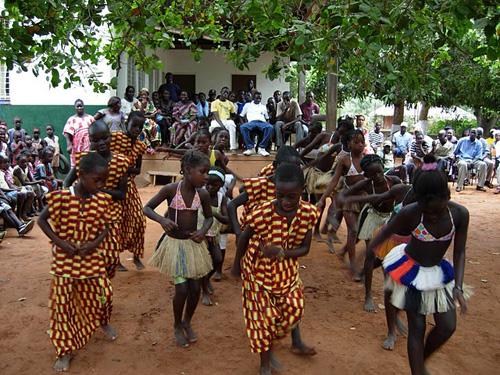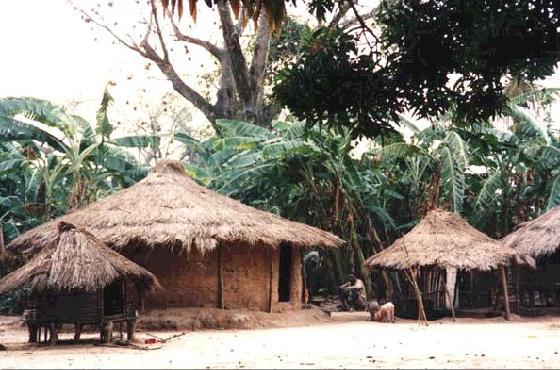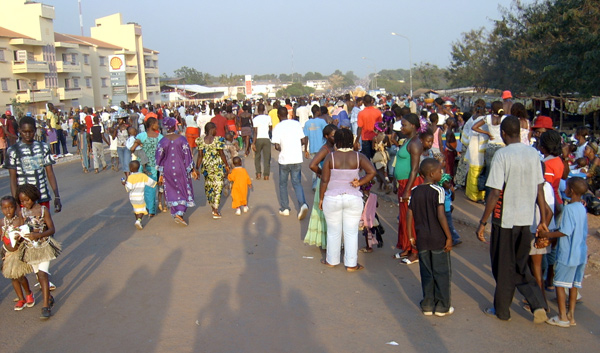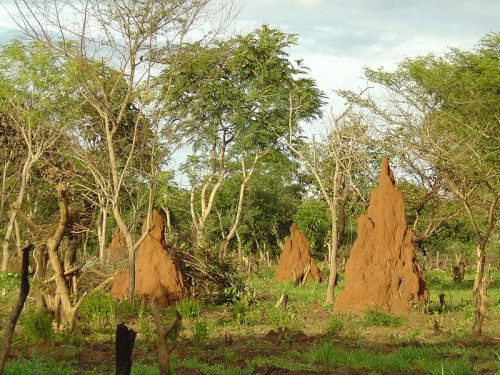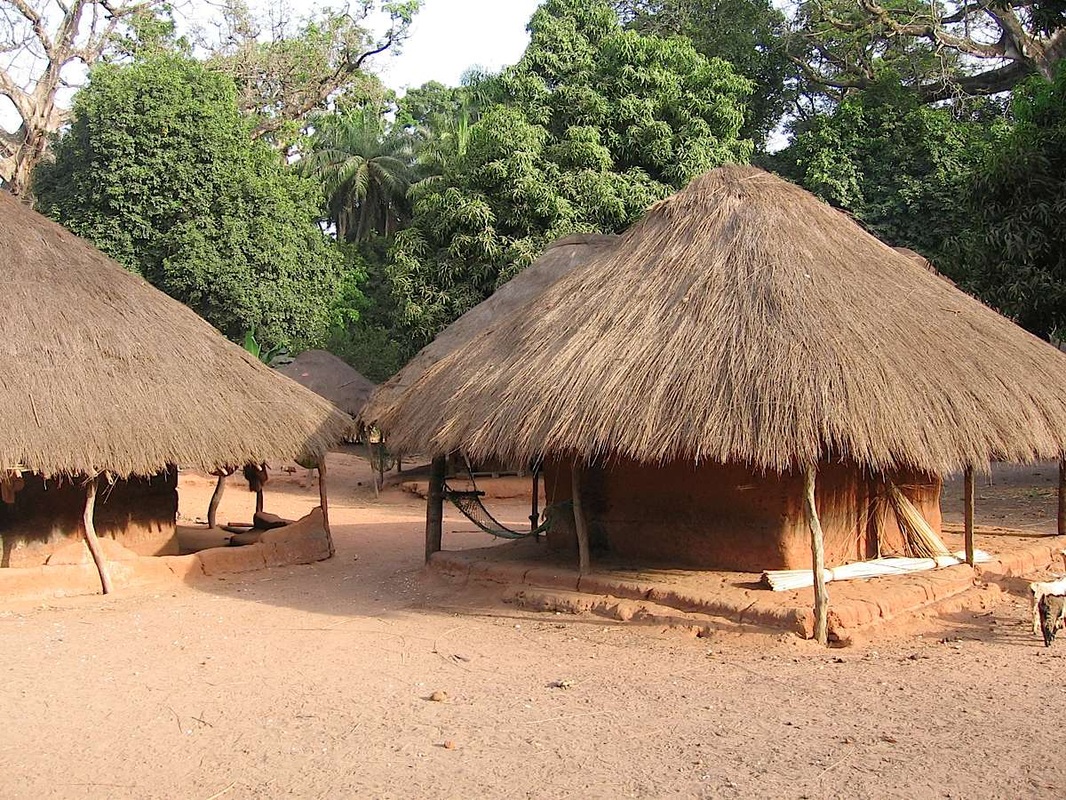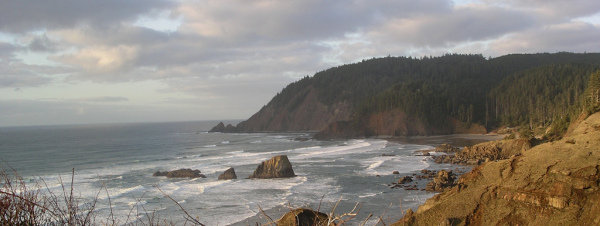PeopleApproximately 1,611,000 people live in Guinea Bissau. Despite it's small size, it is an ethnically diverse land with three main groups: the Fula and Mandinka-speaking people live in the north and northeast; the Balanta and Papel people inhabit the southern coastal areas; the Manjaco and Mancauha people live in the central and northern coastal regions. There are a few people of Portuguese descent still living in the country. Though Portuguese is the official language, it is only spoken by an educated few. Kriol, an African-Portuguese dialect unique to Guinea Bissau, is much more likely to be spoken by the people you meet.
|
Perhaps you've never heard of Guinea Bissau. If so, you have been missing out on some of the friendliest people in Africa. Guinea Bissau is a small nation on the Western coast of Africa. Just off the coastline is the Arquipelago dos Bijagos, small beach islands that are home to a matriarchal society largely untouched by the colonial times. There are beautiful, mangrove-lined rivers throughout the country and beautiful beaches at Varula. In the southern rain forest you can even find elephants and chimpanzees. Truly, Guinea Bissau is an undiscovered treasure, and that is the key to its unique attraction. The country as a whole is relatively unspoiled and undiscovered. The capital city of Bissau has about 200,000 people and is rather relaxed. All things considered, this is the place to go if you want to get off the beaten track. |
Geography
The average temperature of Guinea Bissau is a fairly consistent 80 degrees Fahrenheit (26.3 degrees Celsius). The rainy season lasts from June to September/October with drought for the rest of the year. At 13,948 sq mi (36,125 sq km) this small country is actually larger than Taiwan or Belgium. Most of the country is savanna, though the coastline is a swampy plain, and there is rain forest in the south. Off the coast are the islands, mostly uninhabited and accessible from Bissau.
HistoryBefore the advent of European domination, this land was a part of the Mali Empire that persisted until the 16th century. The Portuguese explored and settled the coast in the 16th century and it became part of the Slave Coast. While the Portuguese controlled the coasts, the inlands were fairly unknown to European conquerors. This was in part due to native slave traders protecting their livelihood. The Portuguese didn't get around to exploring the interior of Guinea Bissau until the 19th century, so until that time the cultures of the interior had limited exposure to the outside world.
In 1956 there was an armed rebellion led by the African Party for the Independence of Guinea and Cape Verde. This resistance was funded by Cuba, China, and the Soviet Union. In fact, Cuba provided much support in the way of arms and supplies for most of the rebellion. By 1973 the PAIGC was in control and independence became official in 1974. Luis Cabral was appointed the first president of Guinea Bissau. Until 1984 revolutionary council ruled the country. Several coups traded power until the election of Viera in 2009, an election that remains in dispute. |
Famous Attraction
Famous attractions for visitors include:
- The "Garden of Balata" - a private botanical garden about 10km outside the capital city of Fort-de-France. The garden is home to approximately 3,000 types of international tropical plants, as well as 300 species of palm trees.
- The House of Fashion and Carnival - a museum with a collection of carnival costumes that have been used during carnivals in Martinique.
- The Monument for the Dead represents the Martinican's who were killed in World Wars I and II.
- Place de la Savanne is a park with vendors who sell souvenirs as well as clothing and beach accessories.
- The Traditional Costumes Museum is outside of Fort-de-France and displays Christmas collectibles and traditional Martinique clothing.
- The Museum of History and Ethnography has a display of Creole jewelry, furnishings, musical instruments and clothing.
- The Pre-Columbian Museum has a display of "Arawak Indian" artifacts.
- The Fort-de-France Roman Catholic Cathedral that has been built entirely out of wood is another tourist attraction.
- The Victor Schoelcher Library, a glass and iron structure, was built in honor of a man who ended slavery on the island of Martinique. Victor Schoelcher donated over 10,000 of his personal books to this very library that today has more than 200,000 books. This library is designed in a "Baroque or Rococo Style" by the French architect Henri Piq. The library was physically moved to Martinique in 1893 from Paris, France.
- The "Garden of Balata" - a private botanical garden about 10km outside the capital city of Fort-de-France. The garden is home to approximately 3,000 types of international tropical plants, as well as 300 species of palm trees.
- The House of Fashion and Carnival - a museum with a collection of carnival costumes that have been used during carnivals in Martinique.
- The Monument for the Dead represents the Martinican's who were killed in World Wars I and II.
- Place de la Savanne is a park with vendors who sell souvenirs as well as clothing and beach accessories.
- The Traditional Costumes Museum is outside of Fort-de-France and displays Christmas collectibles and traditional Martinique clothing.
- The Museum of History and Ethnography has a display of Creole jewelry, furnishings, musical instruments and clothing.
- The Pre-Columbian Museum has a display of "Arawak Indian" artifacts.
- The Fort-de-France Roman Catholic Cathedral that has been built entirely out of wood is another tourist attraction.
- The Victor Schoelcher Library, a glass and iron structure, was built in honor of a man who ended slavery on the island of Martinique. Victor Schoelcher donated over 10,000 of his personal books to this very library that today has more than 200,000 books. This library is designed in a "Baroque or Rococo Style" by the French architect Henri Piq. The library was physically moved to Martinique in 1893 from Paris, France.
NightlifeSome say that Guinea Bissau has the best nightlife in Africa, but you must adjust your expectations to really enjoy it. There really are no nightclubs, as you may know them. Nightlife in Guinea Bissau is characterized by enjoying beers in the outdoor cafes. Natives and tourists alike seem to find gossiping in the cafes the best entertainment around, but it isn't the only entertainment. In Gabu there are street parties with music and dancing, or the Emporia Bar which features live music. You can find other music venues throughout the country, with both native music and modern.
|
Culture
The people of Guinea Bissau are noted for their friendliness and genuine helpfulness. They mainly practice traditional African animist religions, although Islam is gaining ground. Approximately 10% of the population is Christian, mainly Catholic, although there are some protestant missionaries living and working in Guinea Bissau.
Guinea Bissau is known for its gumbe music in which the calabash is the primary instrument. The songs are almost always about such contemporary topics as politics and current conditions. Education is compulsory from age 7 to age 13, but many children must work to help support their families.
Guinea Bissau is known for its gumbe music in which the calabash is the primary instrument. The songs are almost always about such contemporary topics as politics and current conditions. Education is compulsory from age 7 to age 13, but many children must work to help support their families.
CuisineLike any coastal country, fish and seafood figure prominently in the cuisine. Guinea Bissau has many local fruits and vegetables that are used throughout the country. Rice is available everywhere and widely used. The cuisine also relies heavily on milk and whey.
Do you like your food spicy hot? Good! Because in Guinea Bissau they believe in using hot spices and peppers. Fish and meat are frequently combined in traditional dishes, and the people of Guinea Bissau draw from a wealth of culinary influences. They draw from native African traditions as well as from Portuguese recipes. The more elite may also find inspiration in cuisines from Arabia and Asia. You will find that eating is a wonderful adventure in Guinea Bissau. |
Qunar

